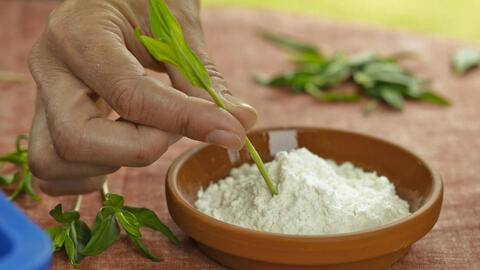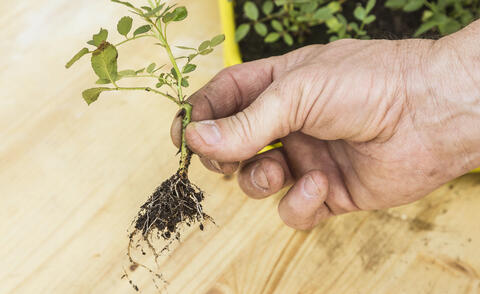Here’s The Correct Way To Use Rooting Powder
Rooting powders or root activators are popular aids for propagating cuttings, particularly for woody plants and roses. We show you how the various agents work and how to use them properly.

Rooting powder is often applied in cutting propagation
Propagating cuttings is the best and sometimes the only type of plant cultivation that enables pure varietal breeding. However, unfortunately rooting cuttings and torn off sprouts are not always reliable. There is a large selection of rooting aids in the trade shops to promote the formation of new roots; these stimulate root formation and should improve the growth of cuttings. But how do these rooting powders actually work and what needs to be considered when using them?
Chemical rooting powder is generally a composition of the natural growth hormones Indole-3-acetic acid, Indole-3-butyric acid, 1-Naphthalene acetic acid and various solvents and fillers such as alcohol and talcum. All three hormones belong to the group of auxines (growth regulators), which occur naturally in all taller plants and are largely responsible for cell division and the growing length of cells. This hormone cocktail helps shoots to form roots more quickly in cutting propagation. Root growth is activated and accelerated, whereby faster rooting success is achieved and the failure rates drop considerably. This is particularly important for highly sensitive cuttings and valuable plants in professional plant cultivation.

Growth hormones also ensure that the plants form thicker and longer roots, which later ensures better water and nutrient absorption. The plants become big more quickly and need less water and fertilizer in their subsequent location. However, as chemical rooting powders represent a hormone treatment for plants, these types of root accelerator (for example, Rhizopon) are only permitted in professional horticulture in Germany and not for the hobby gardener segment. An alternative will have to suffice here.
Even if the real magic ingredient remains the preserve of the professionals, there are also effective agents for hobby gardeners that positively influence rooting in cuttings. Instead of using chemical rooting powder, you can leave cuttings to soak in willow water, for example. For this, young willow branches are chopped up or crushed and steeped in water. The cuttings should soak in this water for 24 hours before planting. Willow water works as a rooting aid because willow, like corn, naturally contains the hormone Indole-3-butyric acid in the relevant amounts. Rooting powder from an algae extract (for example, Neudofix root activator), which also contains natural growth hormones as well as nutrients and trace elements, is also available to hobby gardeners in trade shops.

Various soil additives are also often advertised as root activators, such as silicate colloid (for example, Compo Root Turbo) with fertilizer components. These indirectly promote root formation by enriching the planting soil with phosphate preserves. Such activators are not overly effective when cultivating cuttings, however, when planting larger plants for the first time with an intact root system or sowing lawns in the garden, silicate-colloid can make it much easier for the plant to grow and improve the root formation.
As the composition and administration methods of the individual root activators differ (powder, gel, tablets etc.) and the shelf-life of the products varies considerably, it is essential to study the packaging leaflet carefully before use. Rooting powder can generally be mixed both with potting soil (pay attention to the dose!) as well as applied directly into the planting hole. The cut point on the cutting can also be directly dunked into some activators. Tablets or gels are usually first dissolved in water and then used as a nutrient solution to water the cuttings.
As most industrial rooting accelerators are chemical or part chemical products, you should wear gloves when using them. Avoid inhaling the powder and contact with eyes or mucous membranes. Caution: Less is more when it comes to the dosage of root activators! As positive as the effect of the growth hormone is in small doses on plants, excessive doses can be equally harmful. Because rooting powder acts as a herbicide in large amounts - and it is also used as such in the industry.



